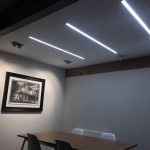Ceiling Fan and Pendant Light in the Same Room: A Guide to Cohesive Illumination
When it comes to lighting a room, creating a cohesive and functional illumination scheme is crucial. Combining different light sources, such as ceiling fans and pendant lights, can enhance the aesthetics and functionality of a space. Here's a comprehensive guide to the essential aspects of incorporating both fixtures harmoniously:
1. Consider the Room's Size and Shape
The size and shape of the room should guide your lighting choices. A large room with high ceilings will require more illumination, while a smaller room with lower ceilings may benefit from a more focused light source. For example, a ceiling fan with wider blades and a larger diameter can provide ample airflow and illumination in a spacious room.
2. Determine the Function of the Room
The intended use of the room will influence the lighting needs. A living room, designed for socializing and relaxation, requires ambient lighting from the ceiling fan, supplemented by the warmth and intimacy of a pendant light. On the other hand, a kitchen, where task lighting is essential, may benefit from a ceiling fan with built-in downlights and a pendant light positioned over the work surface.
3. Choose Complementary Styles
A cohesive lighting scheme requires fixtures that complement each other in style. Modern ceiling fans with clean lines and metallic finishes can be paired with pendant lights featuring sleek glass shades or geometric shapes. For a traditional touch, opt for fans with ornate carvings and pendant lights with fabric or beaded shades.
4. Match the Finish and Color Palette
Consistency in finish and color palette enhances the visual appeal of the room. Brushed nickel ceiling fans blend seamlessly with pendant lights in the same finish. Alternatively, black fixtures can create a dramatic contrast against white or neutral-colored walls. Consider the overall color scheme of the room to ensure the lighting fixtures complement the furniture and décor.
5. Controllable Lighting Options
Flexibility in lighting control is essential for creating the desired ambiance. Look for ceiling fans with multiple speed settings to adjust airflow and illumination. Pendant lights with dimmable bulbs allow you to create different moods and cater to varying lighting needs.
6. Adequate Light Distribution
Avoid relying solely on ceiling fans for illumination. Pendant lights provide focused light for specific areas, such as dining tables or reading corners. This layered approach ensures even light distribution, eliminates shadows, and creates a balanced and inviting atmosphere.
7. Consider Energy Efficiency
Incorporating energy-efficient lighting fixtures can reduce energy consumption and save on utility bills. Choose ceiling fans with ENERGY STAR ratings, which indicate compliance with government-established energy efficiency standards. Opt for LED pendant lights that offer high light output while consuming less energy than incandescent bulbs.
Conclusion
By carefully considering the room's size, shape, function, and style, it is possible to create a harmonious and functional lighting scheme that incorporates both ceiling fans and pendant lights. Remember to prioritize adequate light distribution, controllable lighting options, and energy efficiency for an optimal lighting experience.

Matching Ceiling Fan And Lighting Fixtures For 2024 Spring Hunter

A Rejuvenating Setting With This Fan Light Combo Inspiration Barn Electric

Matching Ceiling Fan And Lighting Fixtures For 2024 Spring Hunter

Matching Ceiling Fan And Lighting Fixtures For 2024 Spring Hunter

Matching Ceiling Fan And Lighting Fixtures For 2024 Spring Hunter

Fan Close To Pendants

What To Consider When Purchasing A Ceiling Fan Fat S Vintage

Matching Ceiling Fan And Lighting Fixtures For 2024 Spring Hunter

Rn Pendant Lights Industrial Ceiling Fan For Farmhouse Inspiration Barn Light Electric

Yay Or Nay Ceiling Fan Over The Dining Table At Home In Love
Related Posts








